I spent the past week in Subic Bay at a conference about Marine Mammal Stranding (http://www.oceanadventure.com.ph/symposiums-and-workshops/philippine-marine-mammal-stranding-network-national-symposium/). In the Philippines most strandings of dolphins, whales, dugongs…etc. are caused by toxins in the water, blast fishing, or entanglement. At the conference we talked about best practices for release, rehabilitation, and euthanasia of these animals and the decision making process involved in these 3 options. It was also a great opportunity to meet representatives from throughout the Philippines working in Coastal Resource Management.
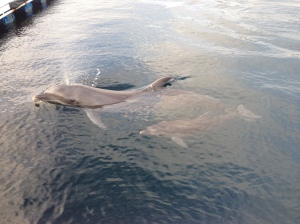
I traveled with my Filipino counterpart Ma’am Rita and our participation was graciously funded by the College of Charleston’s Graduate Student Research Grants. At the conference I learned about the “Dynamite Girls,” 3 dolphins successfully rescued but unable to be released because of permanent acoustic damage due to illegal dynamite fishing. Because these dolphins cannot hear properly, they cannot echolocate; unable to find food they can no longer survive in the wild. Thus dynamite fishing, an illegal practice although still widely prevalent, poses significant risks to marine mammals in addition to the coral reef it blasts apart. I hope to use the “Dynamite Girls” as a youth mascot to inspire community action to reduce destructive fishing methods, protect marine mammals, and minimize personal environmental impacts.
The highlight of the conference was definitely the Marine Mammal First Responder course. If you have ever taken a CPR/First Aid course, imagine if your victim was now a dolphin! Here are some steps to keep in mind:
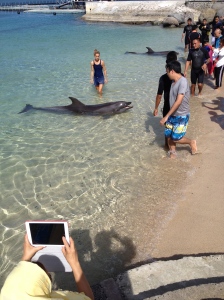
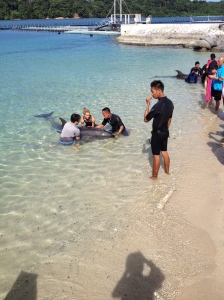
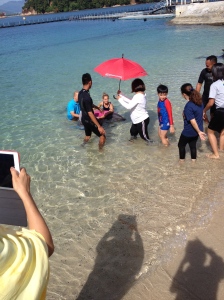
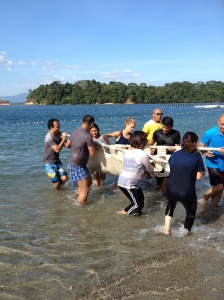
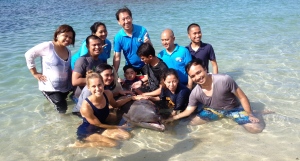
Why spend large amounts of money and effort to save one dolphin?!
Many people argue that limited conservation resources would be better invested in trying to reduce the blast fishing that caused the initial stranding event, rather than trying to save one dolphin that, in the case of the “Dynamite Girls” is not even fit to be released into the wild. However I disagree. If done properly, a marine mammal stranding event and rehabilitation or release has the potential for large environmental gains beyond the immediate animal. Dolphins, whales, sea turtles all fall into the category of charismatic megafauna, meaning large cute animals which generate lots of public support from kids to grandparents. I hope to teach about the value of ocean health, the threat of climate change, and the impact of pollution, all through the story of one dolphin.
Humans gravitate towards stories. Studies have found people are more likely to donate money or support after hearing the story of one child who lives in poverty and needs money for school tuition than when told of an entire nation of children who cannot afford schoolbooks. We like to know that we are making a difference and oftentimes problems like pollution seems insurmountable to the individual (google the North Pacific Garbage Patch!). But even a child can understand that reduce, reuse and recycle or “I don’t need a plastic bag” – at a grocery store, may help to protect the home of the dolphin that he/she just helped to save.
So if you like dolphins or sea turtles learn about the ocean that they live in and see what small actions you can take in your daily life to keep it healthy!

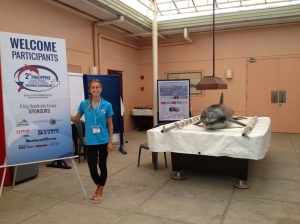
Instead of giving mouth-to-mouth resuscitation, do you give “mouth-to-blowhole”??? hehehe.